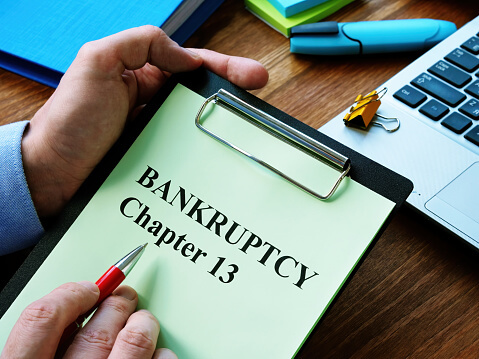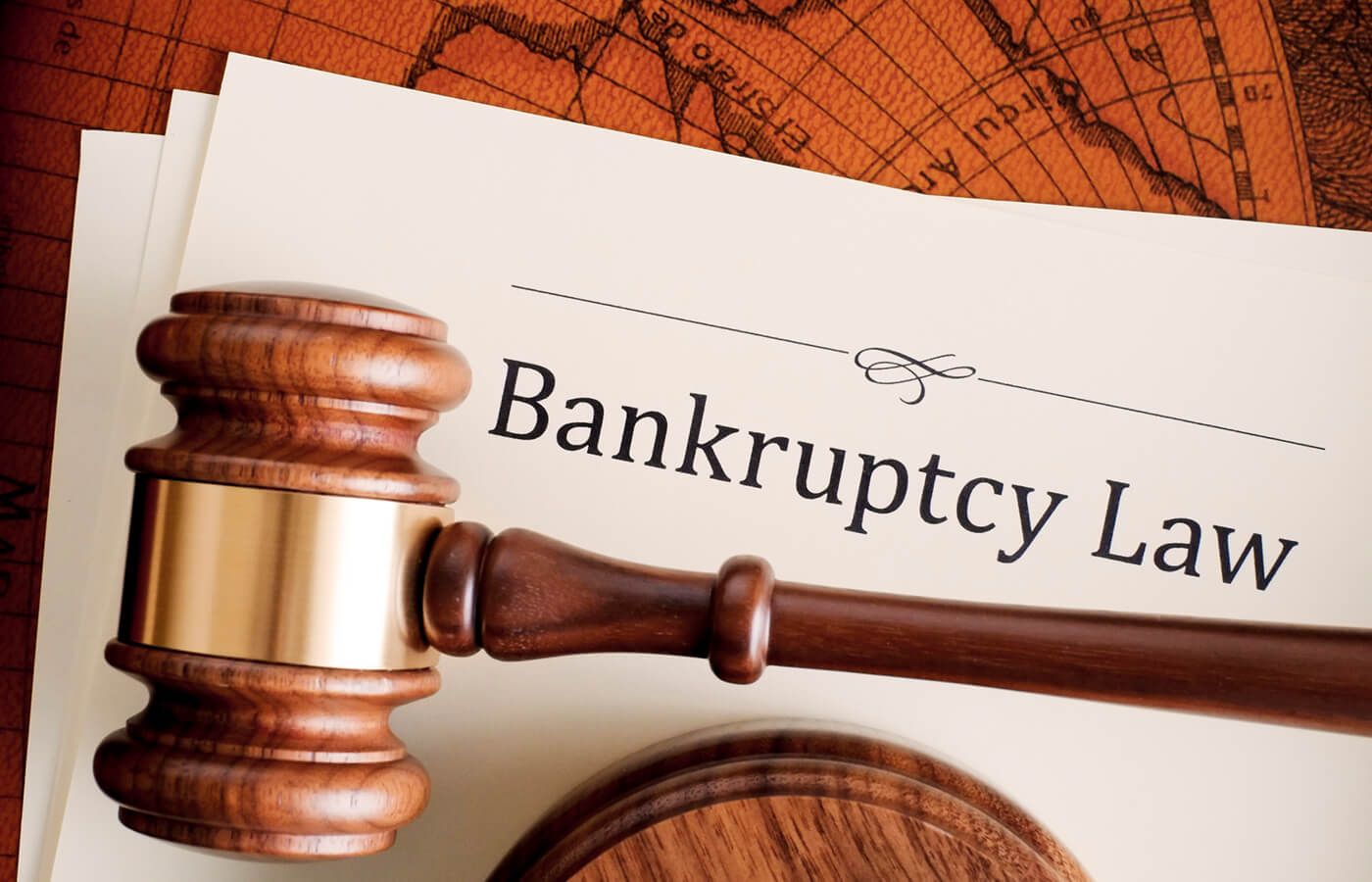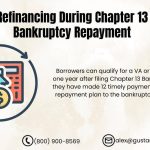
Ah, New Jersey – the land of diners, toll roads, and Chapter 13 repayment plans. While most people flock to the Garden State for its beaches and boardwalks, there’s a select group of individuals who find themselves knee-deep in financial turmoil and in need of a little debt relief. But fear not, fellow Jerseyites, for the ins and outs of Chapter 13 repayment plans are actually more fascinating than a pork roll sandwich at 2 a.m. So grab a cup of Wawa coffee and let’s dive into the crazy world of debt restructuring in the great state of New Jersey.
Eligibility Requirements for Chapter 13 Repayment Plans
So you’re thinking about filing for Chapter 13 bankruptcy and setting up a repayment plan, huh? Well, hold your horses cowboy! Before you go galloping into the sunset with dreams of debt relief, you need to make sure you meet the eligibility requirements.
Here’s the lowdown on who can saddle up and ride into the Chapter 13 sunset:
- Must have a regular income – Sorry, winning the lottery doesn’t count as a regular income in the eyes of the bankruptcy court.
- Must have unsecured debts of less than $394,725 and secured debts of less than $1,184,200 - If you owe more than that, you might as well pack up your bags and mosey on out of bankruptcy court.
- Must have filed your federal income taxes for the past four years – Uncle Sam wants his cut, folks. Make sure you’re up to date on your tax filings before you try to wrangle your debts through bankruptcy.
So there you have it, partner. Make sure you meet these requirements before you go roping in your creditors and setting up a Chapter 13 repayment plan. Otherwise, you might end up lost in the wild west of bankruptcy court with no way out.
Types of Debts Covered by Chapter 13 Repayment Plans
So you’ve decided to tackle your debt head-on by filing for a Chapter 13 repayment plan. But what exactly are the types of debts that are covered under this plan? Let’s break it down for you!
First up, we have **secured debts**. These are debts that are backed by collateral, such as your house or car. With a Chapter 13 plan, you’ll have the opportunity to catch up on missed payments and keep your valuable assets safe and sound.
Next on the list are **priority debts**. These are debts that are given special treatment in bankruptcy proceedings, such as child support, alimony, and certain taxes. With a Chapter 13 plan, you’ll be able to prioritize these debts and pay them off in a structured manner.
And of course, we can’t forget about **unsecured debts**. These are debts that are not backed by collateral, such as credit card bills and medical bills. With a Chapter 13 plan, you’ll have the chance to consolidate these debts into one manageable monthly payment, making it easier to chip away at your financial obligations.
Calculating Your Monthly Payment in a Chapter 13 Repayment Plan
So, you’ve decided to take control of your finances and enter into a Chapter 13 repayment plan. Good for you! Now comes the not-so-fun part – calculating your monthly payment. But fear not, we’re here to help break it down for you in a way that won’t make you want to tear your hair out.
Step 1: Determine your monthly income. This includes all sources of income such as wages, bonuses, alimony, etc. Be sure to include everything so you get an accurate picture of what you can afford to pay each month.
Step 2: Calculate your monthly expenses. This includes all living expenses – rent/mortgage, utilities, groceries, insurance, etc. Don’t forget to include those daily Starbucks runs or your monthly subscription to that streaming service you can’t live without.
Step 3: Subtract your monthly expenses from your monthly income. The remaining amount is what you can afford to pay towards your Chapter 13 repayment plan. This will be your monthly payment amount. Remember, this payment is set by the court and is non-negotiable.
Duration of Chapter 13 Repayment Plans in New Jersey
So, you’re thinking about filing for Chapter 13 bankruptcy in New Jersey, huh? Well buckle up, because we’re about to dive into the wild world of repayment plans. But don’t worry, we’ll make it as painless as possible.
First things first, let’s talk about the duration of these repayment plans. In the glorious land of New Jersey, the length of a Chapter 13 repayment plan can range from three to five years. That’s right, you’ve got up to five whole years to pay off your debts and get your financial ducks in a row.
Now, before you start envisioning yourself as a broke hermit living off ramen noodles for the next five years, fear not. The court will work with you to come up with a reasonable plan that doesn’t leave you destitute. They take into account your income, expenses, and debt level to determine a monthly payment that won’t have you living like a pauper.
So there you have it, the scoop on Chapter 13 repayment plans in New Jersey. Just remember, this process may feel never-ending at times, but trust us, there is a light at the end of the tunnel. And hey, at least you’ll have some interesting stories to tell at your next dinner party, right?
Steps to Filing for a Chapter 13 Repayment Plan in New Jersey
Let’s face it, filing for Chapter 13 bankruptcy in New Jersey is about as exciting as watching paint dry. But hey, if you’ve found yourself drowning in debt and need a way out, it might just be the lifeline you’re looking for. So, buckle up buttercup, because here are the steps to filing for a Chapter 13 repayment plan in the Garden State.
First things first, you’ll need to gather all your financial documents faster than a squirrel hoarding nuts for winter. We’re talking pay stubs, tax returns, bank statements, mortgage documents – the whole shebang. Trust me, it’s not as fun as a weekend at the Jersey Shore, but it’s a necessary evil to get the ball rolling.
Next, you’ll need to complete a credit counseling course. Think of it as a crash course in money management – the last thing you want is to end up back in the same boat after all this hassle. Plus, who knows, maybe you’ll finally figure out the difference between a stock and a bond.
After you’ve jumped through all those hoops, it’s time to file your Chapter 13 petition with the bankruptcy court. This is where the real magic happens. You’ll lay out your proposed repayment plan, which could be as exciting as watching fireworks on the Fourth of July. So, put on your best business suit and prepare to make a case for why the court should approve your plan. Remember, confidence is key – fake it ’til you make it, baby!
Benefits of Choosing a Chapter 13 Repayment Plan over Chapter 7 Bankruptcy
So, you’re in a bit of a financial pickle, huh? Don’t worry, we’ve all been there. But fear not, because there are options out there to help you dig yourself out of that hole. And one of those options is choosing a Chapter 13 repayment plan over filing for Chapter 7 bankruptcy.
First off, with a Chapter 13 repayment plan, you get to keep your assets while still paying off your debts. That means you won’t have to part ways with your beloved vintage record collection or your extensive Beanie Baby collection (they’re worth something someday, we swear).
Plus, with a Chapter 13 repayment plan, you can take your time paying off your debts, typically over a period of three to five years. It’s like pacing yourself in a marathon – slow and steady wins the race. And let’s be real, who wants to sprint through paying off debt anyway?
And let’s not forget the best part – with a Chapter 13 repayment plan, you get to stick it to those pesky creditors. They’ll have to work with you to come up with a reasonable repayment plan, rather than just taking your stuff and calling it a day. It’s like giving them a taste of their own medicine – a little dose of financial karma, if you will. So why file for Chapter 7 when you can take the high road with a Chapter 13 repayment plan?
FAQs
What exactly is a Chapter 13 Repayment Plan in New Jersey?
Well, think of it as your financial roadmap to get out of debt. It’s like GPS for your wallet, guiding you on how to pay back creditors over a period of 3 to 5 years.
How do I qualify for a Chapter 13 Repayment Plan?
First, you need to have a regular income. Sorry, winning the lottery doesn’t count. Second, your debt cannot exceed a certain amount. So, if you owe the entire GDP of a small country, you might be out of luck.
Can I keep my house and car while on a Chapter 13 Repayment Plan?
Absolutely! You get to keep your prized possessions, as long as you continue making payments. Your house, your car, even that tacky velvet painting of Elvis can stay right where they are.
What happens if I miss a payment on my Chapter 13 Repayment Plan?
Oops! Missing a payment is like missing the exit on the highway – you can get back on track, but there might be some extra fees and a grumpy creditor waiting for you. So, try not to veer off course!
Can I pay off my Chapter 13 Repayment Plan early?
Of course! If you suddenly strike oil in your backyard or invent the next big thing, you can pay off your plan early. Just make sure to let your trustee know so they can stop counting the days until your debt-free celebration.
Time to Crunch Those Numbers
So there you have it, folks! Understanding New Jersey’s Chapter 13 repayment plans may seem like a daunting task, but with a little bit of patience and a whole lot of number crunching, you’ll be well on your way to financial freedom. Don’t worry, we won’t judge if you need to break out the calculator or call in reinforcements (aka your accountant friend). Just remember, in the end, it’s all about getting back on track and saying goodbye to those pesky creditors. Happy planning and good luck!










